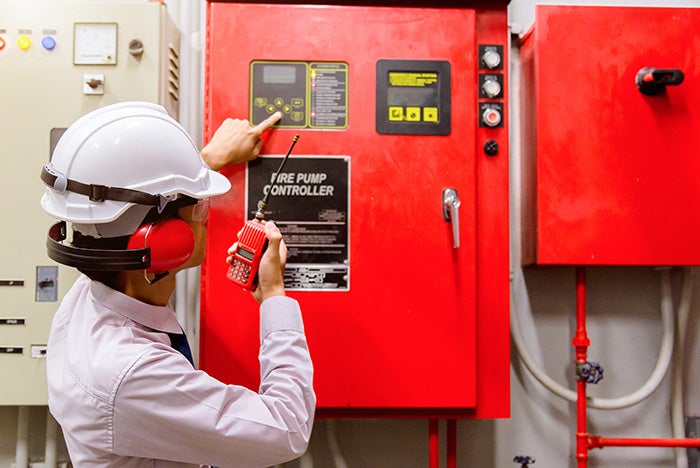The power of a positive, professional attitude
When an electrical system stops working correctly, it isn’t because its feelings were hurt from a curt response. But it could be the reason that Alex, the lead electrician, stops actively participating in status meetings.
When a chiller in a health care facility won’t start, it isn’t because its suggestion for a more efficient maintenance workflow wasn’t enthusiastically embraced. But when Amir, the HVAC supervisor, stops showing up 10 minutes before his shift like he has done his entire career, that might be the reason.
When the facility’s infection control process fails to meet this quarter’s metric, it isn’t because someone responded to its meeting that same metric last quarter with a dismissive, “You should have anyway.” But it could be why Elsa, the senior manager of infection prevention, put in her two weeks’ notice.
Products and processes don’t require positive or professional attitudes to accomplish an expected goal. But people do. That is why a positive, professional attitude is a power skill needed in today’s workplace.
Much like emotional intelligence, which we discussed earlier in this series as an essential power skill, a positive attitude is increasingly important because so much of what we do in the workplace today is accomplished through effective team effort.
Even if you are the single person within your organization responsible for specific tasks, those tasks are part of larger objectives and plans that interact with the work of many other people at the organization. A key part of a person’s motivation to accomplish a goal (besides pizza) is the respect, trust and overall demeanor exhibited by their colleagues. This is especially true in the high-stress, high-stakes environment of a health care facility, where patients’ and customers’ health are dependent on achieving stated goals.
Positive versus negative
What does a positive, professional attitude look like in action? This approach requires a focus on the achievable. It requires not dwelling on past mistakes but seeking lessons from them. It manifests as the ability to meet teammates where they are, looking for opportunities to provide support.
Employees with a positive, professional attitude are proactive in the face of challenges. An employee’s positive, professional attitude is infectious, like a laugh, attracting interest from their colleagues, supervisors, and internal and external clients.
What does a negative, unprofessional attitude look like in action? This person is unwilling to try new approaches to overcoming obstacles. This person brings a dismal outlook to their day-to-day activities. They bring negative energy into the workplace, and that energy is also infectious, spreading a cold, depressing interaction into a group setting.
Organizations that tolerate negative, unprofessional attitudes coming from their employees will suffer low levels of trust and disinterest in customer engagement as a result, leading to lackluster organizational performance.
When working to avoid negative, unprofessional attitudes in your organization, the work starts with you and your approach. The Mayo Clinic outlines a series of behaviors identified with a negative attitude, including: magnifying the negative aspects of a situation and filtering out the positive ones, personalizing anything bad that happens, anticipating the worst possible outcomes, blaming others for one’s own feelings, and viewing all situations in a polarized fashion as either good or bad without any middle ground.
A change in the attitude
When focusing on fostering a positive, professional attitude within your organization, the work also starts with you and your own approach. An Indeed.com article, “15 Ways to Develop and Maintain a Positive Attitude at Work,” provides a great starter list of activities that can be put into action.
Many of their suggestions align with our previous discussion around social/emotional intelligence. Make efforts to be empathetic. Engage in self-reflection. Think about how to phrase questions, requests and feedback. Practice gratitude with others. And, on a more personal level, try to get all the rest you need and smile more often. Try to interact with people who have positive attitudes you’d like to reflect, set personal goals, and then reward yourself when you’ve accomplished them.
When trying to build a positive, professional attitude across your team, remember that your behavior sets the standards, bad or good, for the rest of your team.
Are you bringing a positive or negative attitude into the workplace? Are you framing your employee feedback for areas of growth in a constructive manner? Within your team leadership, are you working to address pessimism in your team members head on? Are you encouraging your employees to invest in work-life balance? Are you focusing on developing your team members to move forward in their careers? Are you celebrating individual and team successes?
If you are working 40 hours per week, that means you spend more than 2,000 hours a year at work. For those planning, designing, constructing and maintaining health care facilities, those yearly totals often add up to even more. We owe it to ourselves, and to those with whom we spend those many hours of work, that the attitude we bring to that experience is a positive one that encourages others to be positive as well.
Adam Bazer, MPD, is director of education at the American Society for Health Care Engineering.





